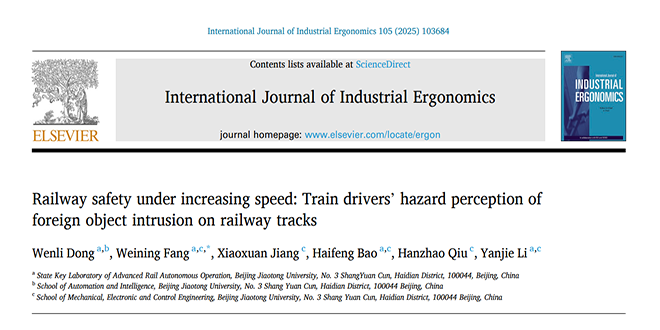Foreign object intrusion on railway tracks poses a signiffcant safety threat to train operations. In this study, we investigate the impact of train operating speed on drivers’ hazard perception (HP). For this purpose, we developed a hazard perception test (HPT) system, simulating scenarios of foreign object intrusion on railway tracks using high-ffdelity computer animation techniques. Thirty certiffed participants, who had passed the train driver psychological qualiffcation test, participated in the HPT across four speed classes: 120 km/h, 160 km/h, 250 km/h, and 350 km/h, the maximum speeds of the levels 0–3 of the Chinese Train Control System in service. The analysis revealed that as speed increases, there is a signiffcant decrease in HP response time, an intensiffcation of visual tunneling, and a signiffcant reduction in the leftward bias of visuospatial attention. These results highlight the critical role of speed in inffuencing HP and carry signiffcant implications for the deployment of assistive technological systems for hazard detection and the enhancement of train design, especially in the context of high-speed railways.
Wenli Dong, Weining Fang, Xiaoxuan Jiang.Railway safety under increasing speed: Train drivers’ hazard perception of foreign object intrusion on railway tracks.International Journal of Industrial Ergonomics,2025. https://doi.org/10.1016/j.ergon.2024.103684
 复杂系统人因与工效学研究所
复杂系统人因与工效学研究所

